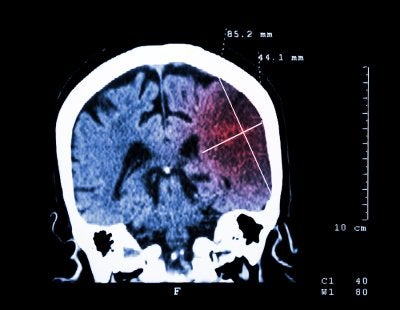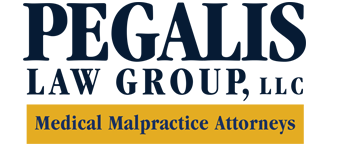-
Overlooked Intravenous Mistakes
Although healthcare providers are typically conscientious and work hard to ensure that errors don’t happen, medical malpractice and medical negligence can and do occur. One often-overlooked area of mistakes in the medical setting is errors with intravenous systems. Here are some commonly overlooked IV mistakes that every patient should know about.
Not Recognizing Damage to the Infusion Device In the past, checking infusion devices for signs of damage was commonplace in medical settings. Now, because devices come with integrated security features, checking every device before using it is often overlooked. Unfortunately, devices can have damage that is not caught by the integrated safety system that puts patients at risk. Often, this damage could have been identified during a pre-use inspection of the infusion device.
 Not Using the Roller Clamp
Not Using the Roller Clamp
IV tubing comes equipped with a roller clamp that allows the tubing to widen and narrow as necessary to control the flow of medication. Closing the roller clamp stops the flow of medication completely, while opening the clamp the entire way allows medicine to flow unrestricted into the patient’s line. Not using the clamp appropriately or failing to use the clamp at all can cause patients to receive an inadequate amount of medication or may cause them to receive too much. Both scenarios can be dangerous for patients and can impact treatment outcomes.Not Checking the Drip Chamber
The drip chamber of an IV infusion device lets air escape from fluid to reduce the risk of an air embolism. It also helps to control the rate of fluid delivery. A faulty drip chamber could provide a patient with too much medication, which can be life-threatening. Safety features of IV systems are not always sufficient to identify problems with the drip chamber, so if it is not manually checked, medication could be delivered too quickly, jeopardizing the patient.If a problem with an IV infusion system occurred when receiving medical care, causing a permanent injury contact the medical malpractice lawyers at Pegalis & Erickson, LLC. Our New York medical malpractice attorneys will gather the details and help determine if there was medical negligence.involved. Contact us today by calling (516) 684-2900.
-
Birth Injuries and Infant Feeding Problems
Occasional fussiness with feeding is usually nothing to be concerned about. But if your baby consistently has problems feeding or hasn’t been gaining enough weight, it’s time to see a doctor. There are many possible causes of poor feeding, including previously undiagnosed birth injuries. After a diagnosis of a birth injury, consider speaking with a lawyer to determine whether the cause might have been medical malpractice.
 Causes of Infant Feeding Problems
Causes of Infant Feeding Problems
Quite a few medical issues can lead to feeding and swallowing problems, including neurological disorders caused by medical negligence. Cerebral palsy is one example. Oral motor dysfunction is common in children with cerebral palsy. This means the infant has trouble sucking. It occurs with either breastfeeding or bottle-feeding. Another possible cause of feeding problems is a respiratory disorder, which might be the result of premature birth. This is because pre-term babies might not be born with fully developed lungs. A third possible cause of feeding problems is neonatal hypoglycemia, or low blood glucose. Doctors should recognize the risk factors of hypoglycemia, and test the newborn’s glucose when appropriate.Signs of Infant Feeding Problems
Babies are weighed at each check-up to ensure they are gaining weight properly. Failure to thrive can indicate feeding and swallowing problems. Aside from the baby’s weight, feeding problems may be indicated by the following signs:- Very long feeding times
- Gagging or coughing during feeding
- Fussiness while feeding
- Back arching while feeding
- Excessive drooling
- Poor coordination of breathing while feeding
- Recurrent respiratory infections, including pneumonia
- Spitting up or vomiting frequently
As the child grows older and begins transitioning to solid foods, he or she may refuse foods with certain textures.
Treatments for Infant Feeding Problems
Hospitalization and tube feeding may be necessary if the problem is severe. Otherwise, specialists may recommend positioning changes, sucking improvement techniques, and oral motor exercises to build strength and sometimes swallow therapy.At Pegalis & Erickson, LLC—a medical malpractice law firm in New York—we’re committed to protecting the rights of the youngest of patients and their families. Birth injuries are distressing, but you don’t have to face this challenge alone. Call our medical malpractice attorneys at (516) 684-2900.
-
Has Your Doctor Been Accused of Misconduct?
 Prior to putting your health and your life in the hands of a doctor, you as a proactive patient should take advantage of available information concerning a physician’s background
Prior to putting your health and your life in the hands of a doctor, you as a proactive patient should take advantage of available information concerning a physician’s background In New York, the Office of Professional Medical Conduct—OPMC—investigates complaints about healthcare professionals. You can use the OPMC website to research your providers and find out if they have any record of complaints in their past. This information can help you make an informed decision about your healthcare. When considering a doctor for your care, you can also check doctors’ backgrounds on the New York State Physician Profile Website.
The medical malpractice lawyers in New York at Pegalis & Erickson, LLC can assist you if you suspect medical negligence has impacted your healthcare. To discuss the details of your case, please call (516) 684-2900. We advocate for people of all ages who have been victims of avoidable negligence that caused them life-altering harm or death.
-
Is Labor Induction Dangerous?
Labor induction is sometimes required if delaying birth could be dangerous to you or your child. In some pregnancies, a doctor may recommend labor induction for convenience, especially if you live far from the hospital. Although labor induction is a common procedure, it does carry risks. When medical mistakes are made before or during induction, those risks increase for both you and your child. Here are some risks of labor induction:
Increased Need for C-Section
After labor induction, the risk of needing a C-section increases. First-time mothers whose cervixes have not dilated appropriately may need a C-section after induction. Having a C-section introduces more risks into the delivery and recovery process, including an increased risk of infection for both you and your baby. It also extends the time it takes to recover from giving birth. Reduced Heart Rate
Reduced Heart Rate
When labor is induced, the medication used can cause many contractions. In addition to being painful, having too many contractions can lower your baby’s heart rate by reducing the supply of oxygen to the baby’s brain. Low heart rate and low oxygen levels can lead to birth injuries and other complications that can have lifelong effects for your child if there was a lack of proper medical monitoring and treatment.Increased Risk of Post-Delivery Bleeding
Inducing labor increases the risk of a serious condition called uterine atony, which causes dangerous hemorrhaging. Uterine atony occurs when the uterus doesn’t contract properly after giving birth. Labor induction increases the risk of uterine atony which happens more often after induction. Do you think you experienced an avoidable complication during labor induction? Do you believe your labor was unnecessarily induced, putting you at risk? Contact our experienced medical malpractice attorneys in New York at Pegalis & Erickson, LLC. If you have concerns please call us at (516) 684-2900. -
Stroke and Misdiagnosis
Stroke can be deadly, and the risk of stroke is particularly high among elderly patients. However, stroke can actually affect patients of any age—including newborns. Because stroke is perceived as being a problem for older patients, younger individuals who suffer stroke may be misdiagnosed. These serious emergency room errors may be a form of medical malpractice if the physician deviated from standard diagnostic procedures.
 When stroke occurs, every second counts. The misdiagnosis of stroke may mean that a patient cannot receive clot-busting drugs within a critical time period to improve the chances of survival. When misdiagnosed patients do survive a stroke, they may suffer serious, lifelong consequences as a result of the death of brain cells.
When stroke occurs, every second counts. The misdiagnosis of stroke may mean that a patient cannot receive clot-busting drugs within a critical time period to improve the chances of survival. When misdiagnosed patients do survive a stroke, they may suffer serious, lifelong consequences as a result of the death of brain cells. Emergency room errors committed on Long Island, New York can have devastating consequences, which is why the medical negligence lawyers at Pegalis & Erickson, LLC are always here to help. Call us at (516) 684-2900 to request a consultation with our medical malpractice team.
-
A Look at New York’s Medical Malpractice Laws
Medical malpractice laws are complex, and they vary from state to state. If you believe you could have a claim, it is important to contact a medical malpractice lawyer with experience practicing in New York. Here is a closer look at some of the specifics of medical malpractice laws in New York.
 Statute of Limitations
Statute of Limitations
The time to bring a lawsuit in New York for medical malpractice can be confusing for patients. If you suspect medical negligence occurred, do not delay in consulting an attorney so that your rights can be protected. The attorneys for the patient need to identify the health care providers who made the avoidable medical mistakes, in order to file the lawsuit.The time limits for filing a lawsuit, called statutes of limitations, are laws which dictate when a lawsuit must be started. Whether the patient is an adult or child, and is alive or has died, all play a key role. In New York the entity involved– such as private facilities, city, state or federal facilities- all have a different time requirement for filing a lawsuit. Once the time limit has expired, a law suit cannot be brought, so if negligence is suspected, action must be taken quickly.
Medical Malpractice attorneys along with medical experts will determine if something serious happened with the medical care you or your loved one received, that should not have occurred. They will gather and review medical records and information, to identify avoidable medical errors.
You can trust the experienced team at Pegalis & Erickson, LLC to help you protect your rights if medical malpractice in New York has happened to you. Talk to an attorney today by calling (516) 684-2900.
-
The Risk of Medication Errors
Medication errors can have serious consequences for people who receive the wrong drugs or the wrong doses in a medical setting. If you have been affected by this kind of error by a healthcare provider and believe that medical negligence is to blame, consider allowing a medical malpractice lawyer to evaluate your case.
 Medication errors occur when a person is given either an incorrect medication or the wrong dosage of the right medication. Automated dispensing cabinets, which are used in many healthcare settings, have been identified as major contributors to medication errors. Mistakes in loading dispensing drawers in these cabinets can easily lead to a provider giving someone the wrong medication.
Medication errors occur when a person is given either an incorrect medication or the wrong dosage of the right medication. Automated dispensing cabinets, which are used in many healthcare settings, have been identified as major contributors to medication errors. Mistakes in loading dispensing drawers in these cabinets can easily lead to a provider giving someone the wrong medication. If a medication error has had disastrous consequences for you, make an appointment with Pegalis & Erickson, LLC to review your case with an experienced medical malpractice attorney in Long Island. We can help you decide how to proceed with your claim and seek damages for your injuries. Set up an appointment with an attorney by calling (516) 684-2900.
-
The Risk of Misdiagnosis in Young Heart Attack Patients
There are many different types of medical malpractice, including misdiagnosis. If a misdiagnosis occurs as an emergency room error, the results may sometimes be fatal. Patients can be strong advocates for their own healthcare by knowing the risks of failure to diagnose heart attacks. The misdiagnosis of heart attacks affects young patients in particular simply because most heart attack patients are of older age. When a younger patient walks into an ER complaining of chest pain, an ER doctor might be more likely to evaluate that patient for panic attacks.
 Further complicating this issue is the misconceptions regarding heart attack symptoms. It’s often thought that heart attacks primarily cause chest, left shoulder, and left arm pain. However, some heart attacks might not cause chest pain at all. Instead, young patients may experience jaw pain, nausea, vomiting, and dizziness.
Further complicating this issue is the misconceptions regarding heart attack symptoms. It’s often thought that heart attacks primarily cause chest, left shoulder, and left arm pain. However, some heart attacks might not cause chest pain at all. Instead, young patients may experience jaw pain, nausea, vomiting, and dizziness. If you’ve lost a loved one to wrongful death on Long Island, New York, or you were injured by a misdiagnosis, you can count on Pegalis & Erickson, LLC to advocate for your legal rights. Call us at (516) 684-2900 to request a case review with one of our experienced medical malpractice lawyers.
-
Should You Take Legal Action Against Your Medical Provider?
 Patients place considerable trust in their doctors, specialists, and nurses. Although healthcare providers are highly trained and the medical industry is tightly regulated, countless medical mistakes occur every year. Medical malpractice lawyers are dedicated individuals who seek to hold negligent healthcare providers accountable for their actions. However, the decision to take legal action against a doctor should not be taken lightly. If you’re a patient who has been harmed, you can count on your medical malpractice attorney to provide the sound legal guidance you need to make a decision.
Patients place considerable trust in their doctors, specialists, and nurses. Although healthcare providers are highly trained and the medical industry is tightly regulated, countless medical mistakes occur every year. Medical malpractice lawyers are dedicated individuals who seek to hold negligent healthcare providers accountable for their actions. However, the decision to take legal action against a doctor should not be taken lightly. If you’re a patient who has been harmed, you can count on your medical malpractice attorney to provide the sound legal guidance you need to make a decision. Getting a Second Opinion
Sometimes, medical treatments simply don’t work as well as a patient hopes they will. A poor health outcome doesn’t automatically mean that the doctor was negligent, but it is a good idea to be a proactive patient by seeking a second opinion from another medical provider. Be sure to have your medical records transferred to the second provider’s office. If you have any test results or imaging scans, bring those with you to your appointment. Plan to ask plenty of questions and take notes about whether the diagnosis you originally received might have been inaccurate or whether the treatment was inappropriate.Establishing the Elements of Medical Malpractice
If you have suffered a harmful, unanticipated outcome after medical treatment, it may be time to consult a lawyer about possible legal action. Your attorney will review your case, including your medical records, to determine if all of the elements of medical malpractice are present. These elements are:- A doctor-patient relationship existed.
- Your doctor gave you sub-standard care.
- The sub-standard care caused your injuries.
- You sustained damages because of the doctor’s negligence.
Understanding the Legal Proceedings
If your lawyer finds that your case has the basis for a lawsuit, it’s time to decide if you wish to move forward. For many patients, legal action allows them to pay their medical bills and meet their future care needs. But it’s important to understand that not all lawsuits are successful. Hiring the right medical malpractice attorney can make all the difference.At Pegalis & Erickson, LLC, we understand how difficult it can be to make legal decisions in the aftermath of a major injury or illness. Our medical malpractice attorneys on Long Island, New York offer effective legal advocacy services that can help your family move forward. Call us at (516) 684-2900 today to request a free case review.
-
What Is Considered Substandard Health Care?
 Sub-standard care is a term that you may hear regarding medical malpractice incidents. If a medical malpractice attorney files a lawsuit on your behalf, he or she will need to prove that the doctor provided sub-standard care that was a cause of your injuries. To accomplish this, your lawyer may have an expert witness testify about what the doctor should have done to meet the standard of care.
Sub-standard care is a term that you may hear regarding medical malpractice incidents. If a medical malpractice attorney files a lawsuit on your behalf, he or she will need to prove that the doctor provided sub-standard care that was a cause of your injuries. To accomplish this, your lawyer may have an expert witness testify about what the doctor should have done to meet the standard of care. The medical standard of care is what a similarly trained healthcare provider would have done for the same patient under similar circumstances. For example, it’s widely accepted that if a patient arrives at the ER with chest pain, an emergency room physician would test for a heart attack. If the doctor fails to request the tests necessary to rule out or in a heart attack so proper treatment can be instituted, then he or she would have provided sub-standard medical care.
If you have any other questions about medical malpractice, you can count on the dedicated team at Pegalis & Erickson, LLC—a malpractice law firm on Long Island, New York. Call us at (516) 684-2900 to request an appointment.
Recent Posts
Popular Posts
categories
- Uncategorized
- Infographic
- Patient Safety
- Patient Health
- Stillbirth
- Birth Injuries
- Medical Malpractice
- Medical Negligence
- Event
- Erb's Palsy
- Injury
- ER
- Video
- Cancer Misdiagnosis
- Medication Errors
- Cerebral Palsy
- Medical Negligence Lawyer
- Anesthesia Injuries
- Brachial Plexus
- Prostate Cancer
- About Us
- Men's Health
- Skin Cancer
- Breast Cancer
- Misdiagnosis
